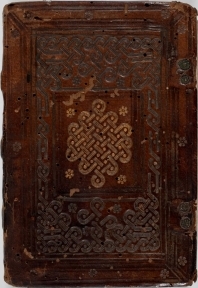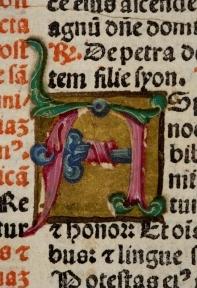
The museum’s library conserves an incunabula copy of the Breviarium cartusianum published in 1491 in Venice by Andrea Torresano. The copy was bought by the Board of Museums from Alexandre de Riquer in 1914, with municipal funds for the acquisition of the work, for the price of four hundred pesetas.
The printer: Andrea Torresano (1451-1529)
He was an active printer in Venice during the period 1479-1528, the golden period of printing in this city. His name was related to two other important Venetian printers: Nicolas Jenson and Aldo Manuzio.
He is considered the successor of the typographic establishment of Nicolas Jenson where he worked as an apprentice. In 1495 he formed a society with Francesco Barbarigo and Aldo Manuzio, who would become his son-in-law on marrying his daughter Maria.
The incunabula
This is a breviary of the order of the Carthusians. These books, which were easy to handle and small in size, allowed the clergymen to do their private prayers of the Divine Office, mandatory since the celebration of the Ecumenical Council of Basel.
The first complete breviary dates from the 13th century and is known as the Breviarium secundum consuetudinem romanae curiae which was rapidly disseminated thanks to the friars minor who officially adopted it in 1223. Other religious orders adapted it to their own liturgy because the unification wasn’t produced until the celebration of the Council of Trent.
The printing of religious works ensured a certain success for the printers and Andrea Torresano participated in the publication of various breviaries between 1479 and 1504.
The copy has a Moorish binding with embossed decorations and it has sheets with florally decorated borders and illuminated initials.
Copies which are conserved in the world
Apart from the one in our Joaquim Folch i Torres Library, unique in the whole of the State, there are others conserved in:
Germany: five copies. In the Staatsbibliothek zu Berlin (delocalised), the Stadtarchiv und Stadtbibliothek of Hildesheim (in bad condition), the Universitätsbibliothek of Erlangen, the Stadtbibliothek de Trier and the Bayerische Staatsbibliothek of Munich.
France: four copies. Two in the Bibliothèque nationale, one incomplete, and the others in the Bibliothèque municipale of Le Mans and in the Bibliothèque du Collège Saint-Guillaume (or Collegium Wilhelmitanum) of Strasburg.
Italy: four copies, two incomplete, one that can be found in Trent and in the Biblioteca Nazionale Braidense of Milan. The two complete copies are conserved in the Biblioteca Nazionale Braidense of Milan and in the Abazzia di Trisulti of Collepardo.
United Kingdom: three copies. In the National Art Library, in the Keble College Library of Oxford and in the St. Hugh’s Charterhouse of Parkminster.
Other places: complete copies are conserved in the Universitätsbibliothek of Basel, the Thurgauische Kantonsbibliothek of Frauenfeld, the Rossijskaja Nacional’naja Library of Saint Petersburg, in Breslau (Poland) and a fragment in the National Széchényi Library of Budapest.
Did you know that we conserved incunabula in the library?
Biblioteca










